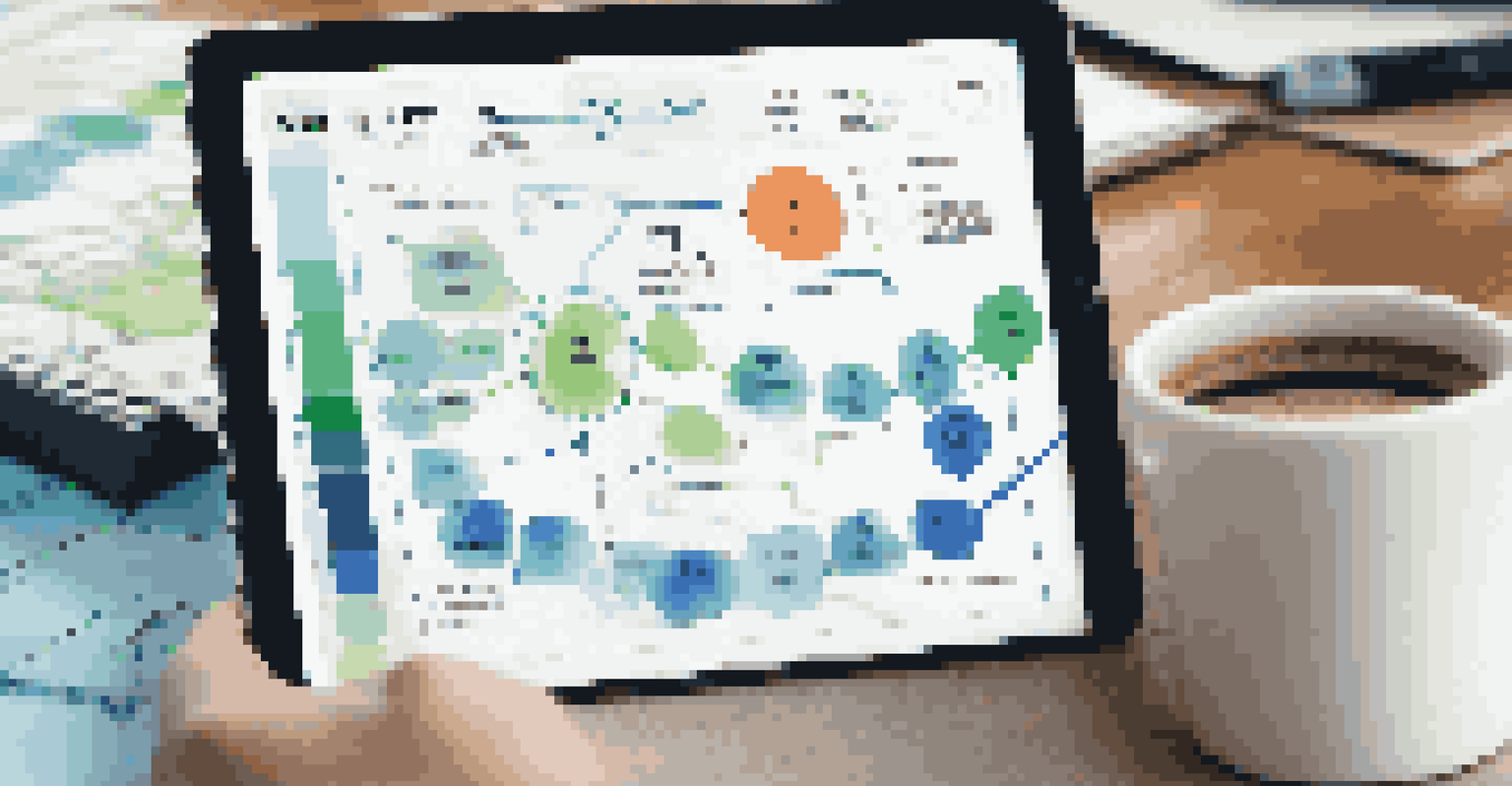The Role of User Journey Mapping in UX Design

What is User Journey Mapping in UX Design?
User journey mapping is a visual representation of the steps a user takes to accomplish a goal on your website or app. It's like creating a roadmap that outlines the user’s experience from start to finish. This process helps designers and stakeholders understand how users interact with their products, identifying key touchpoints and emotions throughout the journey.
You can’t just ask customers what they want and then try to give that to them. By the time you get it built, they’ll want something new.
By mapping these journeys, teams can visualize where users might face obstacles or frustrations. For example, if a user struggles to find the checkout button, this can lead to abandoned carts and lost sales. In this way, user journey mapping not only highlights the user's actions but also their feelings and reactions at each stage.
Ultimately, journey mapping serves as a crucial tool for improving the overall user experience. It encourages empathy by placing the user at the center of the design process, allowing teams to create solutions that genuinely address user needs and pain points.
The Importance of Empathy in UX Design
Empathy is a cornerstone of effective UX design, and user journey mapping is a powerful tool for fostering this understanding. By stepping into the user’s shoes, designers can uncover the motivations and challenges that users face. This not only helps in crafting a more user-centric experience but also aligns the design goals with real user needs.

For instance, consider a travel booking site. By mapping the user journey, designers can see the emotional highs and lows a user experiences when planning a trip. Recognizing these feelings allows designers to create features that alleviate stress, making the booking process smoother and more enjoyable.
User Journey Maps Improve UX
User journey mapping visualizes user interactions, helping teams identify pain points and enhance the overall experience.
Moreover, empathy-driven design leads to increased user satisfaction and loyalty. When users feel understood and valued, they are more likely to return and recommend the product to others, which ultimately drives business success.
Key Components of User Journey Mapping
User journey maps typically include several key components: user personas, touchpoints, actions, and emotions. User personas represent the different types of users engaging with the product, helping to tailor the journey to various needs. Touchpoints are interactions users have with the product, while actions represent the steps they take at each stage.
The best way to predict the future is to invent it.
Additionally, capturing the emotional state of users throughout their journey adds depth to the map. For example, a user might feel excited when discovering a new feature but frustrated when encountering a technical glitch. By documenting these feelings, designers can prioritize areas for improvement in the user experience.
Incorporating these components into journey maps creates a comprehensive blueprint that guides design decisions. It allows teams to pinpoint not only where users encounter difficulties but also where they experience joy, ensuring a balanced focus on both usability and delight.
How to Create an Effective User Journey Map
Creating an effective user journey map involves a few essential steps, starting with user research. This can include surveys, interviews, or usability testing to gather insights into user behaviors and needs. The data collected will inform the personas and scenarios used in the mapping process, ensuring accuracy and relevance.
Next, outline the journey stages, identifying key touchpoints and actions that users take. It’s helpful to visualize this in a flowchart or diagram format, making it easier to identify patterns and gaps. Don’t forget to incorporate user emotions at each stage to provide a more nuanced understanding of the experience.
Empathy Drives Design Success
Fostering empathy through user journey mapping allows designers to create solutions that address real user needs and emotions.
Finally, use the insights gained from your journey map to inform design decisions. This could mean enhancing features that users find valuable or addressing pain points that detract from their experience. Regularly revisiting and updating the journey map ensures it remains aligned with user needs as they evolve.
Benefits of User Journey Mapping
User journey mapping offers a multitude of benefits that extend beyond just improving design. It fosters collaboration among team members by providing a shared understanding of the user experience. When everyone is on the same page, it becomes easier to align goals and drive the project forward.
Additionally, journey maps can enhance communication with stakeholders. Presenting a visual representation of user journeys makes it easier to convey the rationale behind design decisions. This can lead to increased buy-in from leadership and other departments, facilitating smoother project approvals.
Moreover, by continuously analyzing and refining user journey maps, teams can stay ahead of user expectations. This proactive approach allows for the identification of emerging trends and shifts in user behavior, ensuring that the product remains relevant and competitive in the market.
Integrating User Journey Mapping with Other UX Tools
User journey mapping works best when integrated with other UX tools and methodologies. For example, combining journey maps with wireframes and prototypes can help visualize how the design supports the user experience. This holistic approach ensures that every design element aligns with the user’s journey.
Additionally, incorporating analytics tools can further enhance the journey mapping process. By analyzing user data, teams can validate the assumptions made during the mapping process, identifying areas that may need additional attention or redesign. This data-driven approach helps ground design decisions in real user behavior.
Collaboration Enhances Mapping Process
Involving cross-functional teams in journey mapping enriches insights and promotes a culture of user-centric design.
Finally, consider pairing journey mapping with usability testing. By observing real users as they navigate the journey, designers can gain invaluable insights that may not be captured through mapping alone. This iterative process of mapping, testing, and refining leads to a more robust and user-centric design.
Common Pitfalls in User Journey Mapping
While user journey mapping is a powerful tool, there are common pitfalls to be aware of. One major mistake is creating overly complex maps that become difficult to interpret. Remember, the goal is clarity and usability; a straightforward map is often more effective than an intricate one.
Another pitfall is neglecting to update the journey map as user needs change. The digital landscape is constantly evolving, and user behaviors can shift over time. Regularly revisiting and adjusting the map ensures it reflects current realities and continues to serve its purpose.

Lastly, avoid the trap of creating journey maps in isolation. Collaboration is key; involving cross-functional teams can provide diverse perspectives and insights. This collaborative approach not only enriches the mapping process but also fosters a culture of user-centric design across the organization.